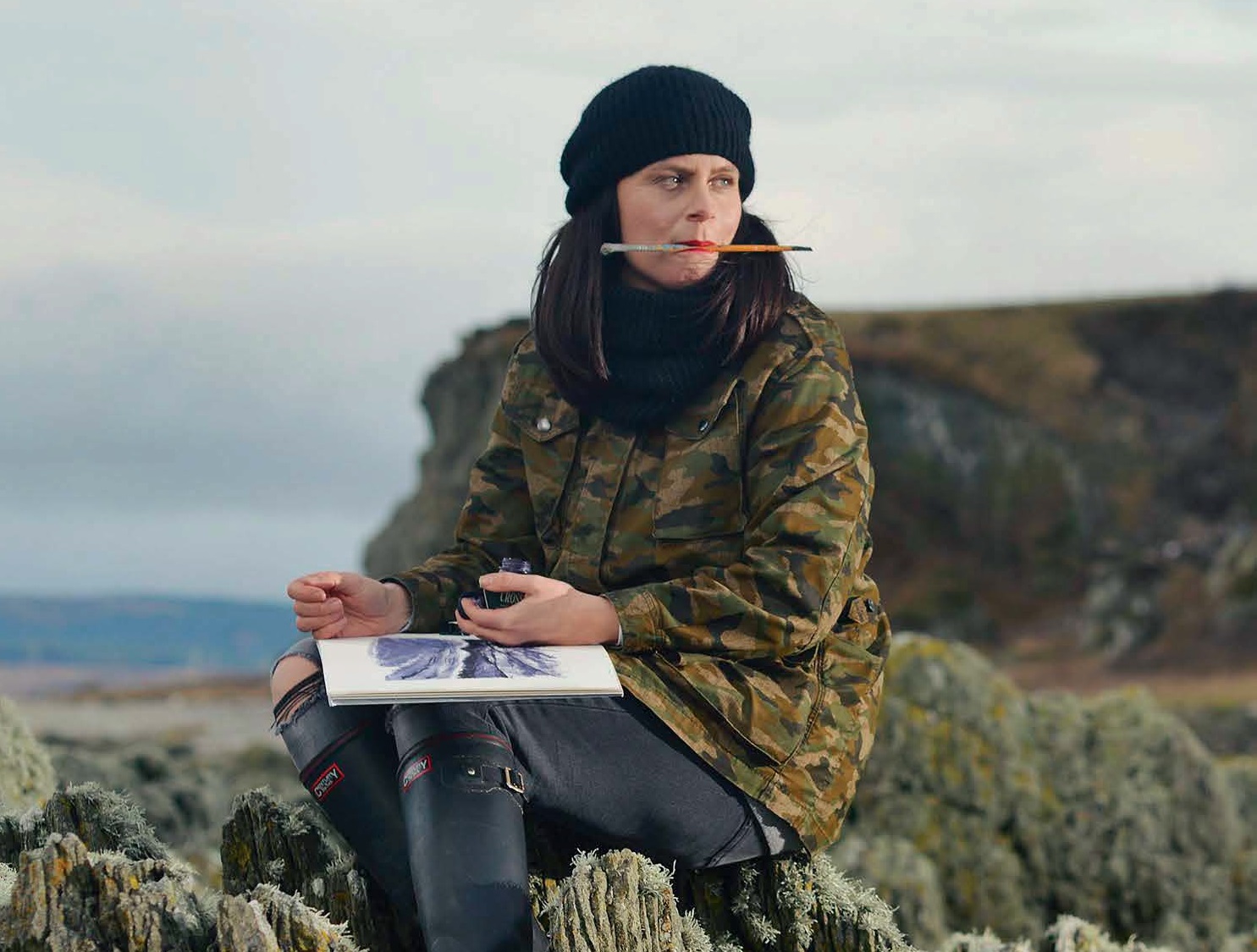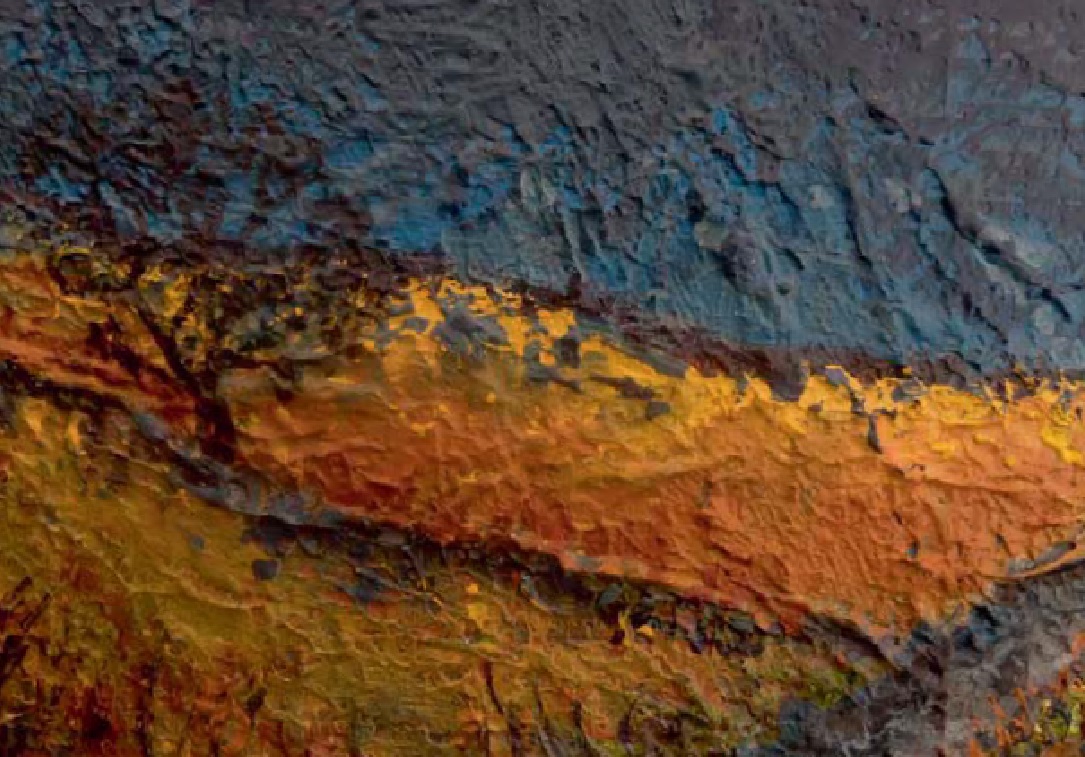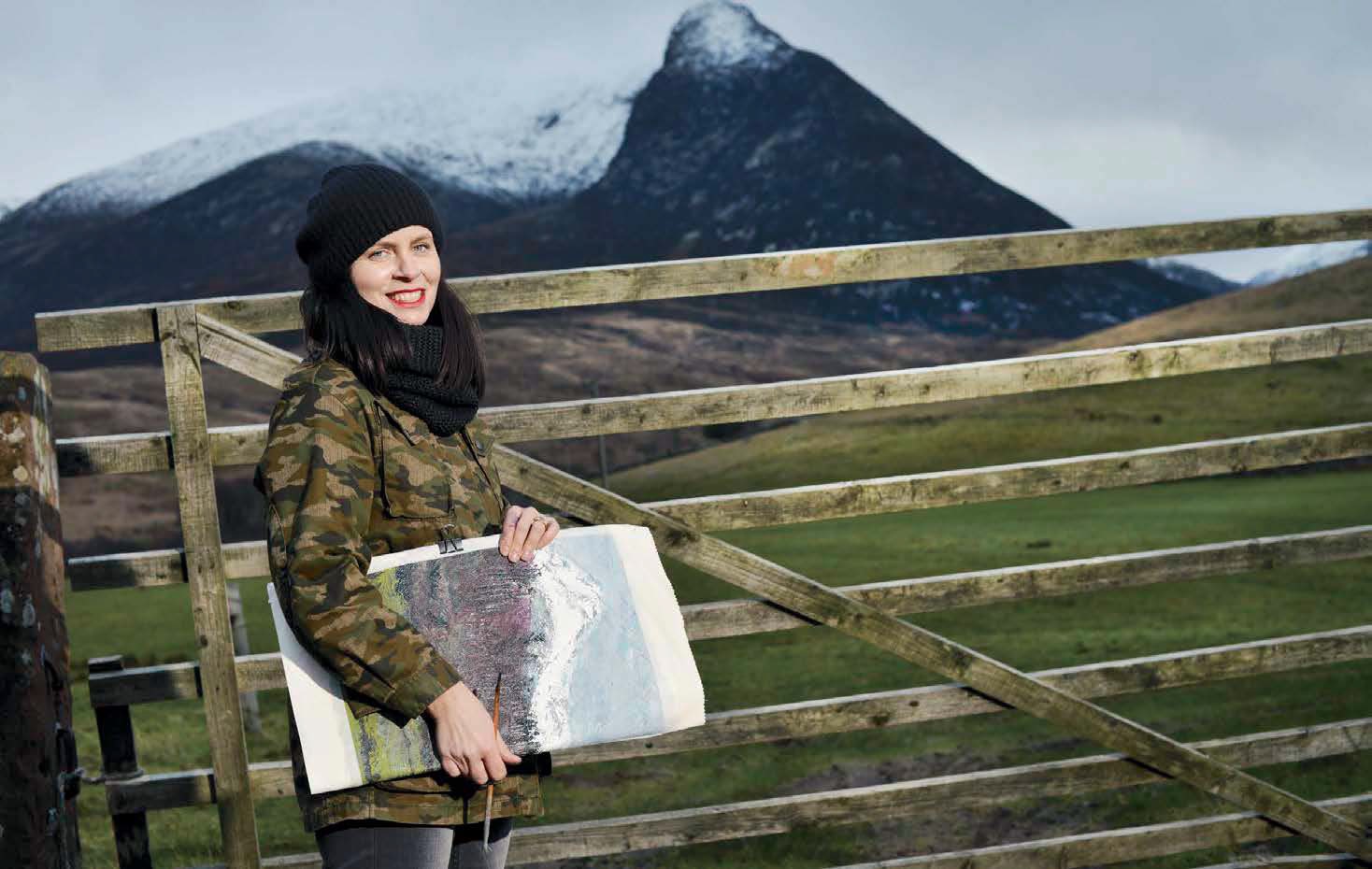
The artist who loves her islands of adventure
Artist Naomi Rae has always been drawn to the tranquility of island life, so spending time on Arran, capturing on canvas the essence of Scotland in miniature, was a childhood dream come true.
I cannot recall a time when islands were not a feature of my life; they are part of what makes me me. Growing up in Cornwall, my first 18 years were spent at, in and on the sea.
From our house overlooking the bay, I could see the small but perfectly formed St Nicholas’s Chapel on the top of The Island; a craggy, grassy, promontory, sticking out of the west side of the bay, like a swollen joint. Floodlit at night, the chapel appeared to me to float in the darkness and I believed it to be where God lived. The seed was sown: heaven is an island.
Although not technically an island, The Island was an island to me as a child and I treated it as such. Only a ten-minute amble from our house, I packed as if to go on a great expedition. My oversized orange haversack always contained a sketchpad, pencil, apple and cagoule. Countless afternoons were spent perched on the rocks beneath the coastguards’ station, sketching and soaking it all in with only the herring gulls and fulmars for company. I felt, yet wasn’t, a million miles from anywhere and I loved it.
Raised in a family of talented, amateur artists, I spent weekends and holidays in the company of one or other of my male relatives, hunkered down in a sheltered spot on The Island, learning the tricks of what was to later become my trade. My paternal grandfather was master of the oil pastel; my uncle, oil paint; and my father watercolour and pencil.

Artist Naomi Rae came to Arran to find peace, space and inspiration (Photo: Angus Blackburn)
They each coached and encouraged with the zeal of the converted in an attempt to win me to their favoured medium: the fluid lightness of the watercolours, the tactile texture of the oils and the vivid shades of the pastels. Ever a pleaser, I told each in turn that I loved their medium the best. In truth, I loved them all equally.
Another island wove its way through the warp and weft of my childhood, and this was a real island; St Mary’s, the main island in the archipelago of The Isles of Scilly. Although only 28 miles off the coast of the mainland of southwest Cornwall, the short helicopter hop from Penzance to St Mary’s felt like travelling to the brink of beyond. I holidayed there annually, from the age of four.
Those Scilly sojourns remain as vivid in my memory as the bright pages of watercolours in mine and my father’s sketchbooks, chronicling our holidays through the Seventies, Eighties and Nineties.
My mother, who freely admitted to being ‘not able to draw a stick person’, had a teacher’s energy and enthusiasm for turning everything into a learning opportunity. She patiently helped and encouraged me to keep a sketchbook-come-journal of each trip to The Scillies. On the first page of my first scrapbook, we stuck a postcard of a map of the islands. My mother explained to me that they lay ‘right at the bottom’ of the map of The British Isles, ‘in the warm bit’ and that ‘right at the top’, in ‘the cold bit’, lay another group of islands.
From then on, I wanted to head north, to those Scottish islands. Haversack, sketchbook and… dog.

Afternoon Sun, an acrylic painting by Naomi Rae
Years later I have the dog I longed for; my Boston terrier Reg and I have just spent the winter months on the beautiful Isle of Arran, in a 450-year-old, whitewashed croft in Glen Rosa. Who says childhood dreams don’t come true?
Although different in so many ways from the Cornish landscape, Arran has from the outset reminded me a great deal of my childhood home. Like St. Ives, the light on the island has a truly unique quality; so changeable and vivid even on the most lead-grey day. Glen Rosa has sunk through my skin with its undulating hills and majestic mountains, and the kaleidoscope of colours shifting through the glen captivated me.
I have learnt to love the metallic hues of the glen on a rainy day as much as its burnished slopes, glinting like gold on the bonus days when the winter sun shone. Indian ink suited the glen when it was fl ooded with rain and battered by the wind and the bright vibrancy of acrylics captured on canvas those days on which everything turned to gold.
The islanders have been unstintingly generous in their welcome and true ambassadors for the rocky outcrop they call home. ‘Welcome to the glen,’ was the salutation that greeted me on my fi rst encounter with one of my neighbours. How can you fail to feel welcomed by such a wonderful greeting, so many miles from home? I have developed a clear case of ‘Wellington foot’ and I will have to be surgically separated from my woollen hat; I couldn’t be happier.
Arran is indeed ‘Scotland in Miniature’, with its diverse landscape of mountains and hills, its sweeping bays and rivers, and its castles and crags. So much to explore, yet small enough to feel you can criss-cross it all. There are cart tracks a plenty to meander down, not knowing what wonderful vistas will open up before you.

Arran’s diverse landscape proved inspirational for Naomi Rae (Photo: Angus Blackburn)
The mainland might only be a short boat trip away, but on Arran you feel that you have travelled as far as you will ever need to travel, to feel as far away as you could ever want to be.
I came to Arran to find peace, space and fresh inspiration; to paint, write, walk and stare, bringing my hopes, dreams and expectations across the water with me. I am leaving with so much more than I ever hoped for. It’s not often one can say that in life. It may not be as far north as I could have travelled to scratch my lifelong itch for Scottish island life, but it has, without doubt, been the perfect place for a Cornish island lover (and dog), dreaming of a Scottish island, to start.
If A is for Arran, then I have the rest of the alphabet of Scottish islands to work through. So B is for Benbecula, C is for Colonsay…
(This feature was originally published in 2016)
TAGS

